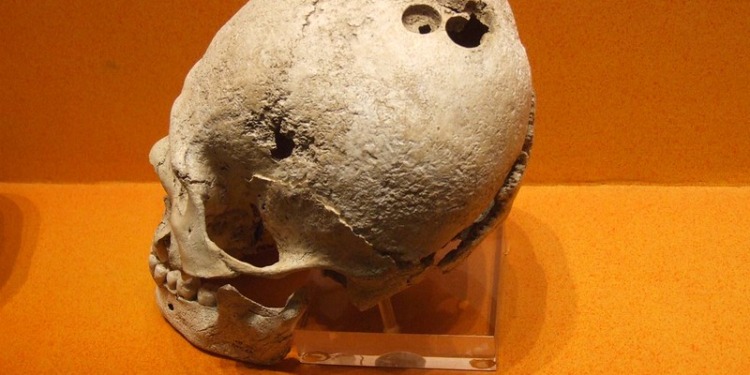Medical history holds many surprises. Maybe you’ve never heard of a scientific discipline called “cultural osteology.” This is the scientific discipline focused on the human skull, what happened to it, how it was treated (if at all), and how it evolved. Certainly, the skull is the most frequently studied part of human remains in ancient tombs – and as it turns out, with good reason.
What scientists and medical experts are discovering is that surgical procedures performed thousands of years ago in different corners of the globe remain relevant today. And these excavations aren’t limited to ancient methods of skull surgery – they also include discoveries of possible treatments for infectious diseases.
As noted by researchers of the University of São Paulo Medical School, Brazil, pre-Columbian medical practitioners, despite their limited knowledge of disease and pathology, had ample knowledge of anatomy and natural medicine from which they derived useful hemostatic agents, antiseptics and drugs “such as quinine for fever and malaria, as well as gold, silver, and other products to perform cranioplasties.” The latter was made necessary in a society where hand-to-hand combat routinely led to battle wounds to their poorly protected heads.
So, it should come as little surprise that operations on crania were as common as wars in human history.
Brain Surgery’s Place in Medical History
Among the oldest known surgical techniques are “trephination and craniotom” which are performed by abrasion, scraping, crosscut sawing, and drilling. Practitioners today still use a variation of this surgery, called a craniotomy, to relieve swelling in the brain after a traumatic brain injury.
Recent studies show that this procedure was practiced in many parts of the world. For example, in China, it not only dated back to 10 000 BC, but was also common. The first known Chinese surgeon, Hua Tuo, is thought to be a great contributor to the field with his practices for headaches, paralysis, and assumed brain tumors.
Data from India show that neurosurgical procedures were completed later, but the Indian surgeon Sasruta gave the first detailed description of surgical instruments and was also the first known physician to achieve a successful entrance of the skull.
Did ancient physicians have well-sharpened, sterilized scalpels or better still, robotic instruments? Definitely not. In South America, using just primitive stones or metal instruments, the Incan surgeons known as sirkaks achieved an average survival rate of 50 to 70% of their craniectomy patients, with little incidence of infection or other complications
In France, trephination, also sometimes called trepanation, was found in one site dating back 6,500 years, holding 120 skeletons, 40 of which had undergone trephination.
This brings us to the latest findings…
An important study published in February 2023 by Rachel Kalisher of Brown University, as a result of work done at an archaeological site, identified two young adults as brothers through DNA analysis. They were buried together beneath the floor of an elite early Late Bronze Age I (around 1550–1450 BC), in a domestic structure at the urban center of Megiddo, which is in modern Israel.
Both individuals showed developmental conditions, with one brother having had a large square piece of bone cut from his frontal bone (cranial trephination). The brother who had the trephination procedure, was between 21 and 46 years old when he died, and there was no evidence of healing, so he likely died immediately or soon after the operation occurred.
Both brothers showed evidence of being ill for an extended period of time. The bones recovered from both were exceptionally porous and marked with lesions, leading archaeologists to hypothesize they suffered from a systemic illness such as leprosy, tuberculosis, or even a genetic disease.
Their elite status privileged them enough to endure it. Further, their potential illnesses and disorders were probably addressed by a trephination procedure, possibly intended as curative to deteriorating health.
Such knowledge of surgical medical practices dating thousands of years ago is only the tip of what we are likely to learn.
And we should be aware that there are several ancient medical practices that are still in use today, albeit in a different, updated form. For example, leeching is considered one of the oldest medical practices and is still used in unique situations such as when congested blood must be removed from a replanted body part. Likewise, cataract surgery has ancient origins – in India – and is still widely performed today.
Plants and animals which are now extinct may have preventive and curative benefits for us today, which is consistent with growing recognition of the One Health concept, rooted in the interface of humans, animals, plants, and the environment.
More research and application of modern technology will likely uncover other ancient and valuable health practices. Thanks, early ancestors!
Editor’s Note: The opinions expressed here by the authors are their own, not those of Impakter.com — In the Featured Photo: One of many skulls found in Monte Alban, the only major center known in Prehispanic Mesoamerica where trepanation was done. There have been cases of trepanation found in more than 20 burials in the Epoch IIIB-IV. Source: Travis on Flickr (cc)










